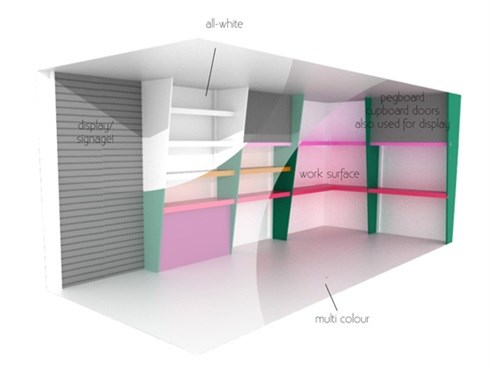
Top stories






More news



























ESG & Sustainability
Steyn City celebrates 14 years of delivering happiness to Diepsloot








ESG & Sustainability
Think before you throw: Join The Glass Recycling Challenge this November




The Cape Craft + Design Institute (CCDI) has helped facilitate the design of innovative, budget-conscious prototypes for a container village that will house a wide variety of small enterprises. When fully developed, Philippi Village will be a multi-use, multi-faceted environment that will house local businesses and entrepreneurs, offer an event and entertainment centre, sports and conferencing facilities, and an education space.
The team of Heinrich Kammeyer and Shilo Hope, who were chosen from a number of applicants by the CCDI, has designed the prototypes. Kammeyer has a doctorate in architecture from the University of Pretoria, runs his own practice and continues to lecture and share decades of experience in his field. Hope completed her masters in architecture and fashion in Italy, practises as an architect, and shares a clothing label with her husband in Cape Town.
"In its construction, operations and tenanting, the developers of Philippi Village have a passion to draw on local creative skills and services," said CCDI Outreach Co-ordinator Craig Carbutt. He took up the gauntlet when the development team contacted the CCDI, as they required the services of a skilled design practitioner or team to design prototypes for the furnishing and fit-out of containers.
The brief specified that the containers would be used for four different but specific purposes - retail (food sales and services) and services (sales and administration). The designers needed to maximise the space, including making recommendations on comfort issues such as ventilation, temperature control, workflow and storage. The design aesthetic had to be professional, aspirational and functional, authentic to context and location, and affordable and hardwearing.

No easy task, given that the budget for each conversion is only R4000/container. "Our inspiration and starting point for tackling the container concept revolved around working with what you've got, skimming off the superfluous, and using standard sizes of available materials - which dictate the form and are used with minimal effort," said Hope.
Furnishings were designed with multiple functions, for example, storage facilities that can be folded out and packed away, and peg boards for hanging; materials were chosen for their versatility, where one can get more from less; and using colours "as protagonist and decorator". The main material is plastic lumber, as it is competitively priced, comes in standardised profiles, is locally produced from local 100% recycled waste plastic and is 100% recyclable.
At this stage, the architects have finished their bills of quantities to prepare each proposal and will now be making the prototypes to refine how they can be assembled. Finally, about 60 of the new look containers will be manufactured for the 12-hectare site.
Philippi Village began as an entrepreneur-development non-profit company, offering a range of free resources (training, mentoring, internet, etc.) to local SMMEs. The founders were inundated with requests from local small entrepreneurs (with big dreams) for actual business premises.